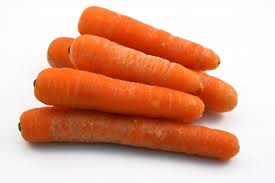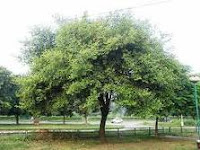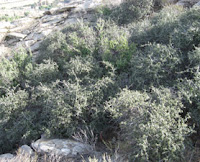 BLUE VIOLET, BANAF SHAH, VIOLA ODORATA
BLUE VIOLET, BANAF SHAH, VIOLA ODORATAThe blue violet or common violet or sweet violet is one of around 200 species of violet which includes white violets and African violets. Violets are in the same family as the pansy, all violets have probably been used in medicine, cosmetics and the perfume industry for thousands of years.
Hippocrates, the Greek Father of Medicine believed they were useful in treating liver disorders and bad tempers. The ancient Celts used to steep the flowers in goat’s milk and use the liquid to enhance female beauty. Pliny wrote that the root of the plant was good when mixed with vinegar to treat gout and spleen problems. The Romans would wear garlands or chaplets believing that the flowers would prevent dizziness and headaches associated with alcohol and they also made wine from violet flowers. For ancient Greeks they were symbols of fertility and love, so they used them in love potions.
In the 10th century people believed that violets could protect against evil, and carried the flowers around with them. By the 16th century the British used them in a syrup as a laxative, and Gerard believed that they were anti-inflammatory and could ease a painful throat. He also wrote that they “comforteth the heart and causeth sleep.” By the 17th century they were made into a conserve with sugar which was favoured by King Charles II. Culpeper wrote that they were good for epilepsy, jaundice, pleurisy, skin problems and good for the eyes. He wrote “The green leaves are used with other herbs to make plasters and poultices for inflammation and swellings and to ease all pains whatsoever arising from heat and for piles, being fried with the yolk of an egg and applied thereto.” The leaves were thought to be a remedy for bruises at the time (17th century) too. The leaves do have antiseptic properties it has been found.
 |
| by Carlo Cibei |
The root can cause vomiting and has been used as a purgative and emetic. Taken internally and externally the leaves have been employed as a treatment for cancer as they allay pain and have been used most effectively for patients with cancer of the throat. Violet seeds have diuretic qualities and are also a purgative and used for gout.
In traditional medicine it is believed that if you bathe your feet in water full of violet flowers and then put the leaves on your temples before going to bed you will sleep soundly. This is supposed to cure insomnia.
Violet flowers contain malic acid, and the leaves, palmitic acid, propionic acid, octenoic acid and octylic acid. The whole plant contains ferulic acid and sinapic acid, and
flavonoids which include quercetin. Rutin is another flavonoid found in the flowers, and there are saponins in the root. The essential oil is methyl salicylate and the plant contains mucilage.
Rutin strengthens the capillaries and walls of the veins, and there are antioxidants in the plant too, beta-carotene and ascorbic acid (
vitamin C). In Germany violet tea or tisane is approved for some skin problems. The flavonoids can lower blood pressure and the plant also contains phenolic glycosides.
The essential oil is said to relieve anxiety and headaches, and is used in the perfume industry.

In some countries people wear a violet leaf in their shoe for 7 days to find a lover and treble that in terms of leaf and days on occasions, depending on how desperate they are I suppose. Mixed with
lavender flowers, violets are said to be an aphrodisiac, whether in a tisane or just the smell is not clear.
To make a syrup from the flowers you will need 1 pound of freshly picked flowers all stems removed, you just need the heads. Pour 2½ pints of boiling water over them and allow them to steep for 24 hours. Strain through muslin, and add double the weight of sugar (for 1 cup of syrup add 1¾ cups of sugar or
gur and heat but don’t let the syrup boil. Heat the syrup until the sugar has dissolved and then pour it into a sterile glass bottle or jar and allow to cool. Then put in the fridge or freeze. You can add a little
lemon juice to counter the sweetness when boiling, two tablespoons will suffice. This is concentrated and can be used as a refreshing drink if you pour a little syrup over ice and add sparkling water. You can decorate it with fresh
mint or
lemon balm leaves. A tisane recipe for the leaves is given below.
The name viola comes from the Greek meaning lone, but there is a myth in which Jupiter turned his beloved Io into a white bull so that she could escape the wrath of his wife, the jealous Juno, and made the earth sprout violets for her to eat. Some say this is how the flower got the name viola.
Another myth about the violet is that of Venus and Adonis or Cybele and Attis. Attis was killed by a wild boar he was hunting, and as his blood fell to earth, violets grew from it. (Some myths say the flowers were hyacinths however.)
The flower was adopted as a symbol by followers of Napoleon after his exile on Elba. He wrote a last message to them which said that he would return “with violets” and this became their code word for him and a toast.
The violet has been mentioned very often in literature, and Aristophanes the ancient Greek writer of comedies (c.446-386BC) referred to the city of Athens as the “violet-crowned city”. Shakespeare has references to violets in several of his plays including “Hamlet”. In that play Ophelia in her distress after her father Polonius’s death sings in the presence of the Queen Gertrude, Hamlet’s mother,
“I would give some violets, but they withered all when my father died: they say he made a good death.” (Act 4 scene 5)
And in the same play (Act 5 scene 1) Laertes says of Ophelia on her demise:
“Lay her in the earth,
And from her fair and unpolluted flesh
May violets spring.”
 |
| by Leo Michels |
In one of the Lucy poems William Wordsworth also mentions violets: -
“She dwelt among untrodden ways
A violet by a mossy stone
Half hidden from the eye!
Fair as a star when only one
Is shining in the sky.”
Of course there is the old Valentine’s Day rhyme too,
“Roses are red,
Violets are blue,
Sugar is sweet
And so are you.”
In Victorian times violets were the symbol of modesty, hence the phrase “shrinking violet.” Violets get their reputation for being modest and chaste because they are well hidden in forests in their natural habitat in Britain. It was also the flower of watchfulness, faithfulness and truthfulness. It was associated with mourning, especially for those who died when young, and is seen in many of the pre-Raphaelite paintings. (Millais Death of Ophelia for example).
In the US the blue violet is the state flower of Illinois, New Jersey and Rhode Island. It is the flower of those with birthdays in February too.
You can use violet flowers in salads, or crystallize them and use for cake decorations.
The tisane below can be used as an eyewash, aftershave lotion, face tonic, and as a wash for babies. It is also effective for throat problems and mouth infections.
VIOLET LEAF TISANE
Ingredients
2½ oz violet leaves, freshly picked
1 pt boiling water
Method
Clean the leaves in cold water, then place in a stone jar. Cover them with the boiling water and cover the jar tightly. Leave to steep for 12 hours, overnight, or until the water is green. Strain through a muslin or fine cloth and store. Drink cold.
For a compress to apply to skin for rashes etc., use 1oz chopped leaves to ½ pint of boiling water.
This has Taste and is a Treat.







































